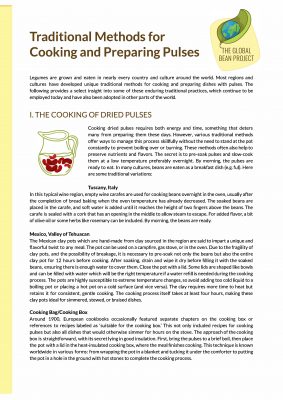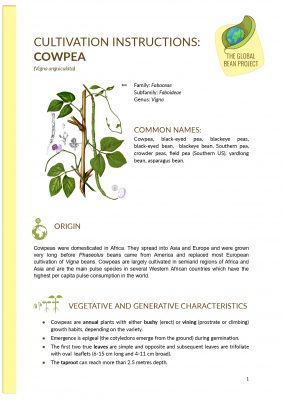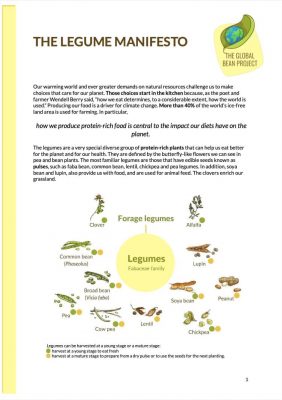Our warming world and ever greater demands on natural resources challenge us to make choices that care for our planet. Those choices start in the kitchen because, as the poet and farmer Wendell Berry said, “how we eat determines, to a considerable extent, how the world is used.” Producing our food is a driver for climate change. More than 40% of the world’s ice-free land area is used for farming. In particular,
how we produce protein-rich food is central to the impact our diets have on the planet.
The legumes are a very special diverse group of protein-rich plants that can help us eat better for the planet and for our health. They are defined by the butterfly-like flowers we can see in pea and bean plants. The most familiar legumes are those that have edible seeds known as pulses, such as faba bean, common bean, lentil, chickpea and pea legumes. In addition, soya bean and lupin, also provide us with food, and are used for animal feed. The clovers enrich our grassland.
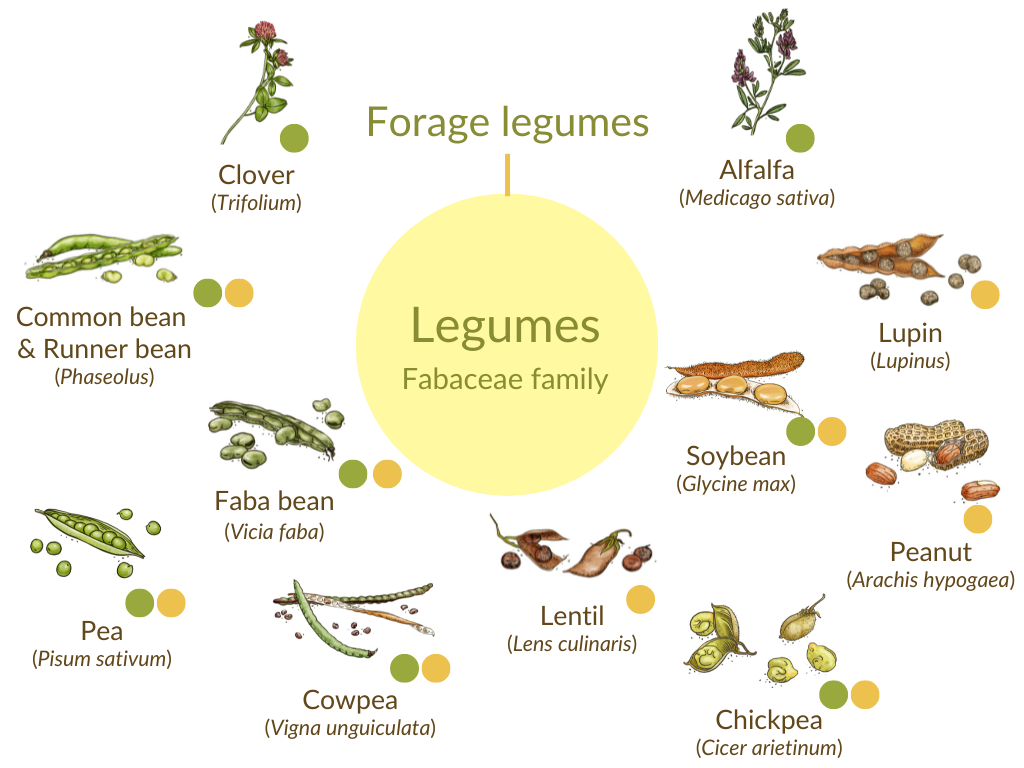
- harvest at a young stage to eat fresh
- harvest at a mature stage to prepare from a dry pulse or to use the seeds for the next planting
Faboideae (or Papilionoideae, from the latin for butterfly: papilio) are characterised by the butterfly-like flowers. In German, this fascinating sub-family of plants is known as the plant with Schmetterlingsblütenartige (butterfly-like) flowers.
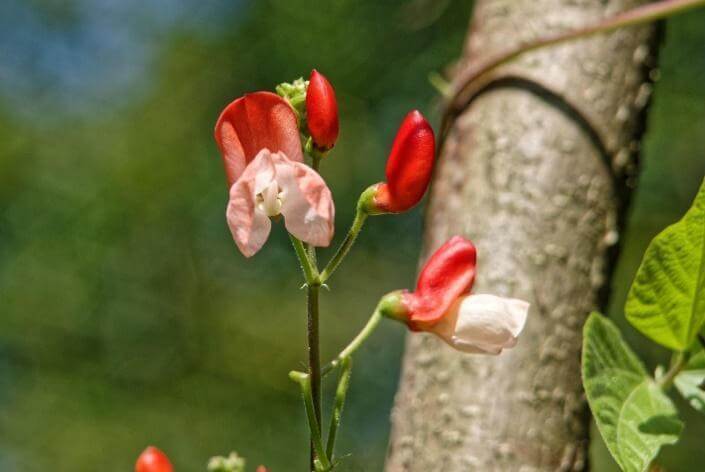
LEGUMES ARE NATURE’S FERTILISER FACTORY
Why should a plant family defined by the shape of the flower get so much attention? Much of the answer lies below the soil surface and the role legumes play in the nitrogen cycle. Legumes host special bacteria called Rhizobia in nodules on their roots. These capture nitrogen from the air. This natural nitrogen fixation is climate-friendly because there is no need for energy-demanding nitrogen fertilisers and because emissions of nitrogen-based greenhouse gases from the soil are reduced.
How legumes grow without nitrogen fertiliser is a fascinating story of the partnership between the legume plant and bacteria hosted in nodules on the roots. These nodules are familiar to farmers and gardeners. A substance called leghemoglobin, which is similar to the haemoglobin in our blood, is key to the process. Consequently, the inside of healthy root nodules on legumesisred when cut open.
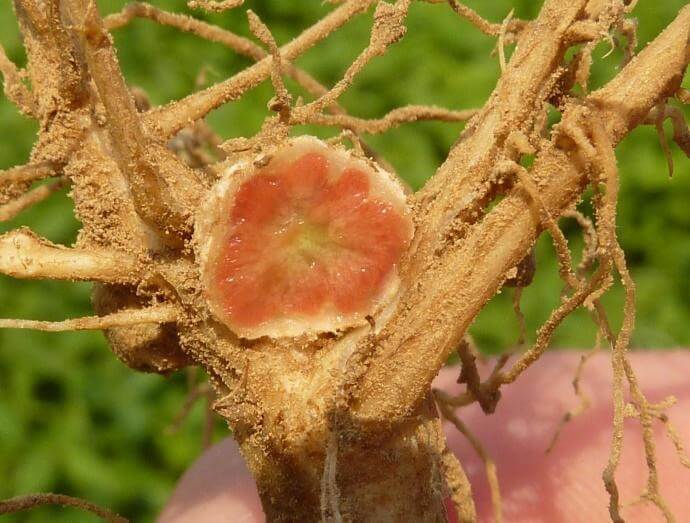
Nitrogen cycle
Legumes help us to reduce the impact of our food on the nitrogen cycle. Our current food system puts an enormous strain on the nitrogen cycle releasing greenhouse gases and polluting the atmosphere and water. Legumes play a role in our efforts to reduce the damage to the global nitrogen cycle by providing an alternative to synthetic nitrogen fertilisers and an alternative to animal-based protein.
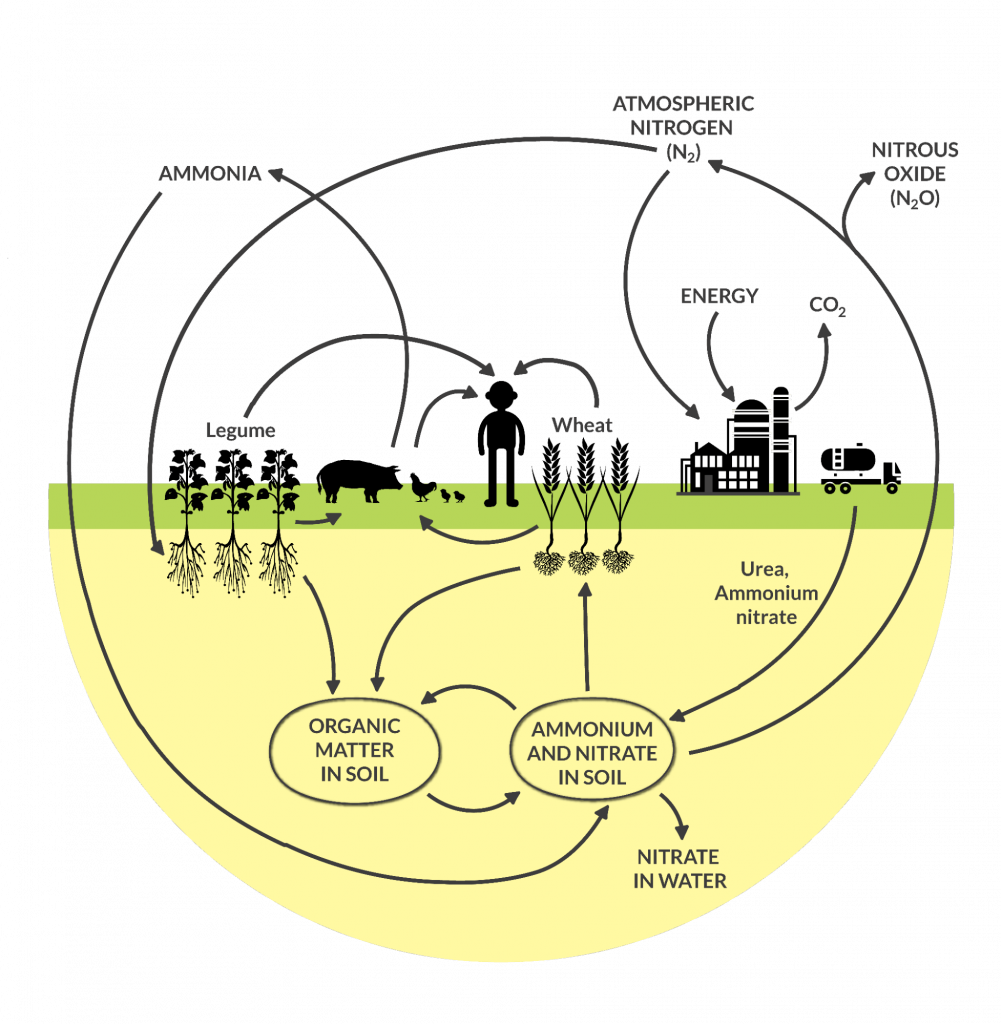
LEGUMES ARE PROTEIN-RICH AND HEALTHY
Nitrogen is a building block of proteins. Legumes are rich in protein supported by the nitrogen fixation in the root nodules. Common bean, pea, faba bean, lentil and chickpea contain two to three times more protein than cereals. Soya bean and lupin are even richer in protein. These proteins are especially nutritious. Our ancestors understood this and used pulses to complement grains like wheat and oats in our diets. They have left us a legacy of traditional dishes that use legumes. Today, legumes are also particularly important in vegan and vegetarian diets. Beans and peas can enrich all cuisines. In particular, they are an excellent alternative to meat. In addition to a wide range of vitamins and micro-nutrients, beans and peas are also rich in complex carbohydrates that protect the heart and reduce the risk of cancer. Eating more legumes instead of meat is healthy for most of us and healthy for the planet.
LEGUMES DIVERSIFY
Legumes are very different to cereals, such as wheat, barley and maize, which dominate our countryside. More legumes in Europe mean more diverse farming. Their flowers are a source of pollen and nectar for insects. Their biodiversity also helps birds and other wildlife. Farmers who grow legumes have fewer problems with weeds, diseases and pests over the whole crop rotation.
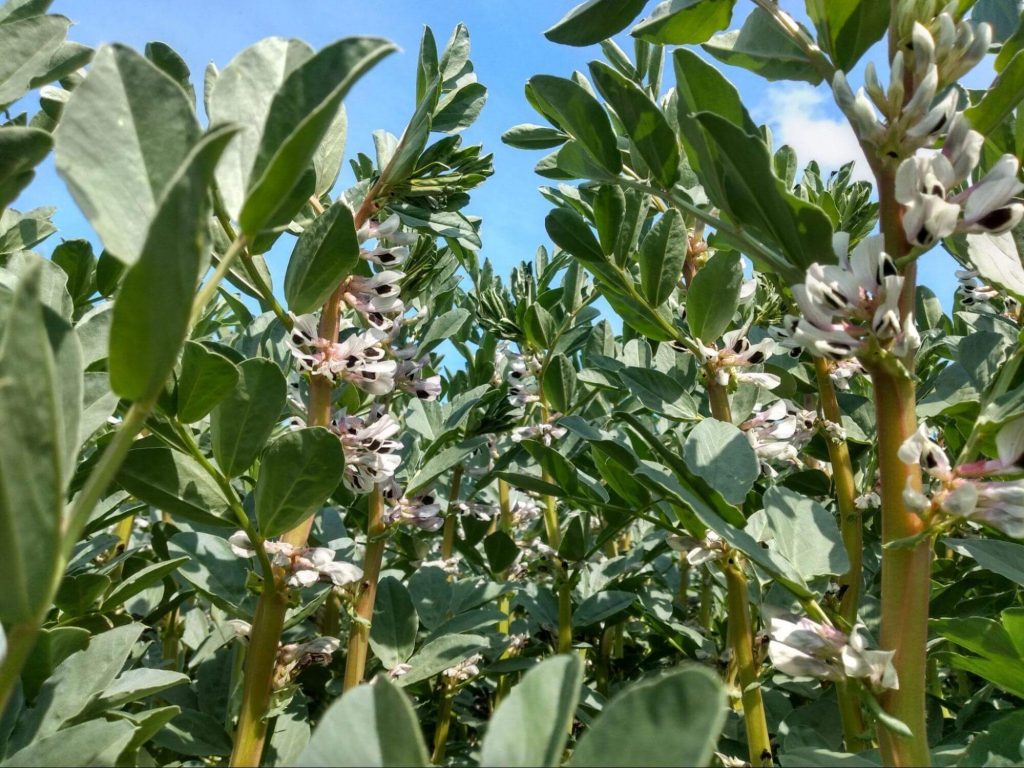
WE NEED MORE LEGUMES
Legumes are good for us, good for our farms and gardens, and good for the planet. They protect our climate because they are a natural source of fertiliser nitrogen, they increase crop diversity, and they support sustainable healthy diets. Despite this, legumes are rarely grown on European farms even though beans (including soya bean), pea and blue, yellow and white lupins grow as well in Europe as anywhere else. Instead, most European farmers who grow arable crops concentrate on growing cereals, such as wheat, barley and maize, because these crops grow particularly well in Europe.
European farmers also produce large quantities of meat, milk and eggs from livestock that require large amounts of plant protein and land for grazing. About 60% of cereals grown in the European Union are fed to livestock and Europe is self-sufficient in most livestock products. However, these cereals do not contain enough protein or the best quality protein. To compensate, we import the equivalent of 35 million tonnes of soya bean, mostly from South America, to feed livestock in the European Union. This means there is a link between what we eat and deforestation. This food system is not in balance and is not sustainable. Change is required.
We need to grow more legumes on European farms. We need to increase the role of legumes in our diets. The overall effect of such a transition will reduce greenhouse gas emissions from agriculture, lead to less reliance on imported soya, and provide improvements in our health. Such a change depends on all of us. As citizens, we need to find ways to effectively reward farmers who grow legumes. As consumers, we need to rediscover and promote the wonderful pulse-based dishes of the past and present.


